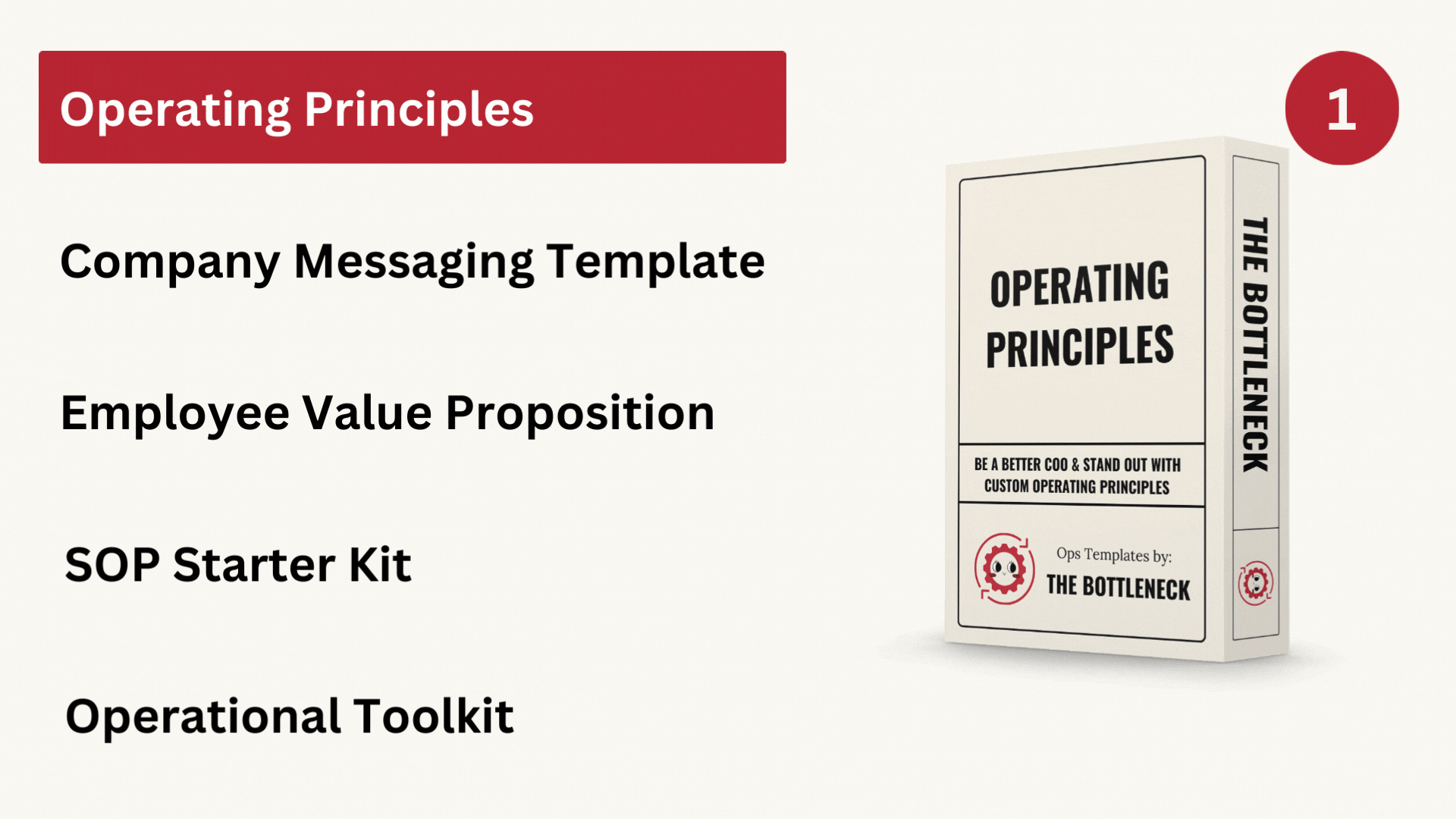
Read Time: 10.4 Minutes
Happy Sunday Operators ⚙️
While building The Bottleneck and Cornerstone, I’ve been focused on creating a great first impression for subscribers.
Greatness can come from small actions you take.
The founders of Airbnb get this.
They increased their bookings by 3x in a few months by doing one thing.

Together With Slidebean
A Financial Modeling Bootcamp for Operators
Join Slidebean in a LIVE 1-week course with Slidebean’s CEO Caya to create investor-proof projections, estimate your fundraising needs, and track the core KPIs for any startup.

Setting the Stage
A Sight for Sore Eyes
Let’s cut to 2007. Airbnb founders Brian Chesky and Joe Gebbia were broke. Rent was due on their San Francisco apartment.
As luck would have it, there was a conference in the area and all nearby hotels were fully booked.
As any sensible duo would do, they decided to raise rent money by renting out three air mattresses in their apartment.
The plan, which was to charge the guests $80 each, surprisingly worked. They decided to turn this into something bigger, so “Air Bed and Breakfast” was born.
Get it? From the air mattresses?
Instead of renting out their three beds, the pair invited others to list their mattresses. The idea was good on paper, but bookings weren’t just coming in at the rate they wanted.
It got to the point where they had to sell cereal on the side to make ends meet. (Shoutout Obama O’s and Captain McCains)
So, what went wrong?
They’ve figured out that the biggest problem was that the listing wasn’t “comfortable” enough for the eyes. Why would a tired traveler want to sleep in something that doesn’t even resemble a home?
Taking matters into their own hands, Brian and Joe visited EVERY bed and room listing in New York in 2009.
With a trusty camera, they asked owners if they could take photos of their place.
Every listing on their website had better photos within a matter of days.
Did it work?
Well, after a month - bookings doubled. Then it tripled.
As of 2024, there are over 7.7 million active listings on Airbnb, a far cry from the original 3 beds it once offered.
Airbnb’s net worth as of May 2024 is $92 billion. Funny to think that all of that started from three beds.
Of course, this isn’t just a story about how Brian and Joe unlocked the secret to AirBnB’s success.
Ops Tactic: First impressions of your product matter. By working on the customer experience from day one, you’ll unlock a flywheel.

Why this Matters
First Impressions Matter
Picture yourself as a traveler. You’re traveling miles from home and want a temporary place to stay. You see a listing for a $30-a-night room with only a single photo of a bed to give you an idea of what it looks like.
Would you book that room?
Or would you book a pricier room but at least the listing shows you every nook and cranny of what you’re getting?
The truth is that first impressions are very important for all industries.
Research shows that it takes people between a tenth of a second and 30 seconds to form first impressions. Psychologists call this “first impression bias.”
They believe this bias has implications for relationships, ideas, and yes - businesses too.
Here’s how first impressions affect some industries:
22% of travelers use room photos when booking a room or rental online.
75% of shoppers rely on product photos when shopping online.
75% of users judge a website’s trustworthiness based on its design.
The power of professional photography and videography works wonders in businesses. It’s because we’re human. We can’t help but create notions based on what we see upfront.
Making first impressions goes beyond showing professional-quality visuals of your product or service. It also means showing the people who make the business operate like clockwork.
Look at law firms, for instance. They’re willing to show their ragtag team of attorneys in full get-up.
Some businesses even show their happy clients on their websites. Trusting a brand is much easier when you know they’ve made someone else happy.
Your customers will only want to transact with you if they know who or what they’re getting.

The Blueprint
Taking advantage of the first impression bias might be the key to your missing success. Here are three tactics you might want to try:
I. Invest in Professional Services
In the early days, Airbnb’s listing photos were horrible, to say the least. Property owners used their phone cameras and sometimes used images from classified sites.
Things started to pick up when the platform started having professional-quality photos.
Keyphrase: “professional quality.”
You’ll likely spend a lot of money to get the right upgrades for your business. But, no matter what happens, don’t forget to allot a budget for professional services.
A good camera in an even better cameraman's hands will do your business well. A recent study reveals that content with good images gets 94% more views than those without. Why is it that we’re so inclined to see beautiful things?
Good photos show emotion. Look at any highly rated Airbnb or hotel listings. How do you feel when looking at them? You’ll probably feel comfortable or happy at first glance.
If that’s how you feel, the photos do their job. Many buyers use their emotions as much as their wallets when spending money.
Good photos are easy to identify - Showing a product shouldn’t be as complex as showing a piece of art. When people see your product or service, they should know what they’re getting in just one glance.
Good photos are memorable - A person’s ability to remember information after three days increases by 65% if the text is partnered with a strong image. Needless to say, staying in the head of customers (in a good way, of course) will benefit your sales and brand recognition.
Investing in professional services isn’t just about hiring good photographers. It also means spending money on other services you may lack, such as web design and security.
Investments like these can have major payoffs in the future.
II. Establish Your Branding
Branding is one of the most important things to set up first.
Circling back to “first impression bias,” people can easily tell what your business is and who you want to appeal to in just one look.
Having the right branding doesn’t just tell people what you are. It also sets you apart from the competition. If you used to want healthy fast food, the first thing that came to mind was Subway, not McDonald’s.
That’s because Subway had established itself as the mecca for healthy, fresh fast food in the last couple of decades. (Even if Subway has since been proven to be… gross)
Developing a brand is a long process, but it generally means doing these:
Identify your audience
Develop a personality and a brand voice
Pick a name that sticks and a slogan that rolls off the tongue
Design your brand look and logo
At this point, you’ve probably checked a few of the boxes above. Something might be off if it’s not sticking and you’re still not getting the engagement you think you deserve. Many operators aren’t comfortable with rebranding for fear of losing what they already have.
Remember when Dunkin’ Donuts dropped the Donuts in their name, and everyone went nuts?
This is a good example of a successful rebrand.
The modernized name and design resonated with our generation’s appreciation for simpler branding. It also worked because Dunkin’ now offers lots of other things, not just donuts.
Now, let’s take a look at a bad rebrand.
In 2009, Tropicana rebranded their orange juice boxes. It was a million-dollar rebranding campaign that failed horribly. People loved the wacky straw in an orange box because the design felt more natural. It really represented what Tropicana was about.
The rebranding failed because a glass of orange juice with the words ``100% orange” didn’t look as natural. The change was small, but it was radical enough to make people forget what Tropicana was really about.
People saw it, and their first impression bias told them that if they wanted 100% orange juice, it wouldn’t come in that packaging.
Tropicana shifted back to its original branding just a few weeks later.
Whether you’re developing a brand or rebranding one, it’s important to understand what your customers want to see.
III. Simplify the Buying Process
Airbnb has made it easier for people to see rooms they’re about to book by sprucing up each listing with new photos.
Over the next few years, the Airbnb platform added new ways to make booking easier.
On their app, I can book a room halfway across the world in less than a minute. Everything I need—reviews, a list of amenities, a map of the locations, and more—is in a single place.
How has this customer-centric approach affected Airbnb?
Well, around 6 guests check into a room from Airbnb every second.
A huge part of what makes booking a room so easy is that their app and website is well-designed and easy to navigate.
How can you apply it to your business?
If you’re running an online shop, make checking out easy. If it’s a travel blog you’re after, make your website easier to navigate. All the effort you make into simplifying the experience pays off heavily. If you want to create an online marketplace where people can sell their goods, make it easier for them to sell!
Every customer is smart but they don’t like to complicate things.
You might be thinking, “so I should treat my customers as if they’re stupid?”
No. Treat them as people who value time and effort. Don’t make them go through 10 pages to buy a product. It should be point A to point B, that simple.
Value their time and they’ll value your business.

Spread The Word
Share The Bottleneck with friends to get a few freebies. Maybe you’ll make some new ones on the way 😆
We’ll give you free stuff and more friends if you share a link. Only one link.

{{rp_personalized_text}}


